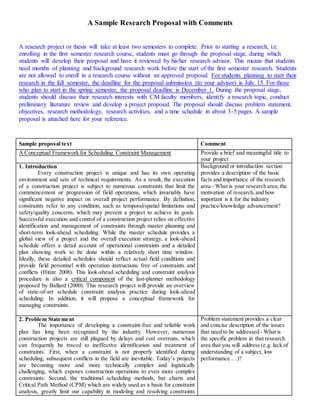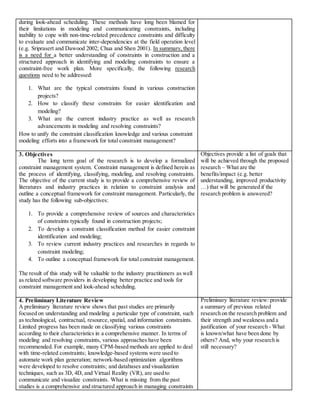1. The research will develop a conceptual framework for constraint management in construction projects. Effective identification and treatment of constraints is important for on-schedule and on-budget project completion but current methods are limited.
2. A literature review found studies focused on specific constraint types but not a comprehensive classification approach. The research will review constraint sources and characteristics, develop a classification method, and outline a framework to manage constraints throughout project planning and execution.
3. The objectives are to understand constraint sources and characteristics, develop a classification method, review current modeling methods, and outline a conceptual framework for total constraint management across project phases.


